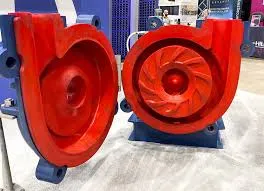Corsican
- Afrikaans
- Albanian
- Amharic
- Arabic
- Armenian
- Azerbaijani
- Basque
- Belarusian
- Bengali
- Bosnian
- Bulgarian
- Catalan
- Cebuano
- Corsican
- Croatian
- Czech
- Danish
- Dutch
- English
- Esperanto
- Estonian
- Finnish
- French
- Frisian
- Galician
- Georgian
- German
- Greek
- Gujarati
- Haitian Creole
- hausa
- hawaiian
- Hebrew
- Hindi
- Miao
- Hungarian
- Icelandic
- igbo
- Indonesian
- irish
- Italian
- Japanese
- Javanese
- Kannada
- kazakh
- Khmer
- Rwandese
- Korean
- Kurdish
- Kyrgyz
- Lao
- Latin
- Latvian
- Lithuanian
- Luxembourgish
- Macedonian
- Malgashi
- Malay
- Malayalam
- Maltese
- Maori
- Marathi
- Mongolian
- Myanmar
- Nepali
- Norwegian
- Norwegian
- Occitan
- Pashto
- Persian
- Polish
- Portuguese
- Punjabi
- Romanian
- Russian
- Samoan
- Scottish Gaelic
- Serbian
- Sesotho
- Shona
- Sindhi
- Sinhala
- Slovak
- Slovenian
- Somali
- Spanish
- Sundanese
- Swahili
- Swedish
- Tagalog
- Tajik
- Tamil
- Tatar
- Telugu
- Thai
- Turkish
- Turkmen
- Ukrainian
- Urdu
- Uighur
- Uzbek
- Vietnamese
- Welsh
- Bantu
- Yiddish
- Yoruba
- Zulu
Telephone: +86 13120555503
Email: frank@cypump.com
Aug . 06, 2024 01:07 Back to list
Exploring the Applications and Advantages of Horizontal Slurry Pumps in Industrial Processes
Understanding Horizontal Slurry Pumps Design and Applications
Horizontal slurry pumps are essential equipment in various industries, particularly where the transportation of abrasive and viscous materials is necessary. These pumps are engineered to move slurry—a mixture of solids and liquids—over long distances effectively and efficiently, making them indispensable in mining, mineral processing, dredging, and wastewater treatment applications.
Design Features
The design of horizontal slurry pumps is a critical factor contributing to their performance and reliability. Typically, these pumps consist of a horizontal casing that houses the impeller and volute. The pump is driven by a motor or engine that spins the impeller, creating a centrifugal force that moves the slurry through the pump.
One of the distinguishing features of horizontal slurry pumps is their robust construction. The materials used for the pump casing, impeller, and other components must withstand harsh operating conditions. Common materials include high-chrome iron, rubber-lined components, and sometimes even ceramic materials for highly abrasive applications. This design ensures durability and reduces wear over time, which is crucial for maintaining operational efficiency.
Moreover, horizontal slurry pumps are engineered to handle different types of slurries, including those with high solids content and varying viscosities. This versatility is achieved through adjustable impeller sizes and configurations, allowing operators to customize the pump’s performance to meet specific application requirements.
Applications
horizontal slurry pump

Horizontal slurry pumps are widely utilized across several industries due to their versatility. In the mining sector, these pumps are used to transport mineral slurries from extraction points to processing plants. The ability to handle abrasive materials without significant wear makes them ideal for this application. For instance, in gold and copper mining, slurry pumps are employed to move the mixture of ore and water after the initial crushing and grinding stages.
In the dredging industry, horizontal slurry pumps play a critical role in the excavation and removal of sediments from underwater environments. They enable the efficient transfer of sand, silt, and mud, which is essential for maintaining waterways and constructing ports.
Another significant application is in wastewater treatment facilities. Here, horizontal slurry pumps are utilized to move sludge and other mixtures through various stages of treatment. Their ability to deal with solid-laden liquids ensures effective processing and helps maintain the operational efficiency of the treatment plant.
Maintenance and Operational Considerations
To ensure the longevity and performance of horizontal slurry pumps, regular maintenance is crucial. Operators should conduct routine inspections for wear and tear, particularly on the impellers and casing. It is advisable to replace worn components promptly to prevent operational failures that could result in costly downtime.
Moreover, operators must be aware of the specific characteristics of the slurry being pumped, including its density, viscosity, and temperature. Understanding these factors helps in selecting the right pump configuration and setting the appropriate operating parameters to optimize performance and energy consumption.
In conclusion, horizontal slurry pumps are vital for efficiently transporting slurries in various industrial applications. Their robust design, versatility in handling different types of materials, and essential role in processes such as mining and wastewater treatment underscore their importance in modern industry. With proper maintenance and operational awareness, these pumps can provide reliable service, significantly contributing to the productivity and efficiency of industrial operations.
-
Durable & Efficient Submersible Mixed Flow Propeller Pumps Quotes
NewsApr.29,2025
-
BPA-Free Sand Gravel Pump for Aquariums & Industrial Use Terapump
NewsApr.29,2025
-
High-Efficiency Big Capacity Double Suction Pumps Bulk Supply
NewsApr.28,2025
-
High-Performance Vapor Honing Slurry Pumps Durable & Efficient Solutions
NewsApr.28,2025
-
OEM Slurry Pump Engineering Factory Custom Solutions & Durable Pumps
NewsApr.28,2025
-
1HP Sewage Submersible Pump Durable Vertical & WQ/QW Models Supplier
NewsApr.28,2025










